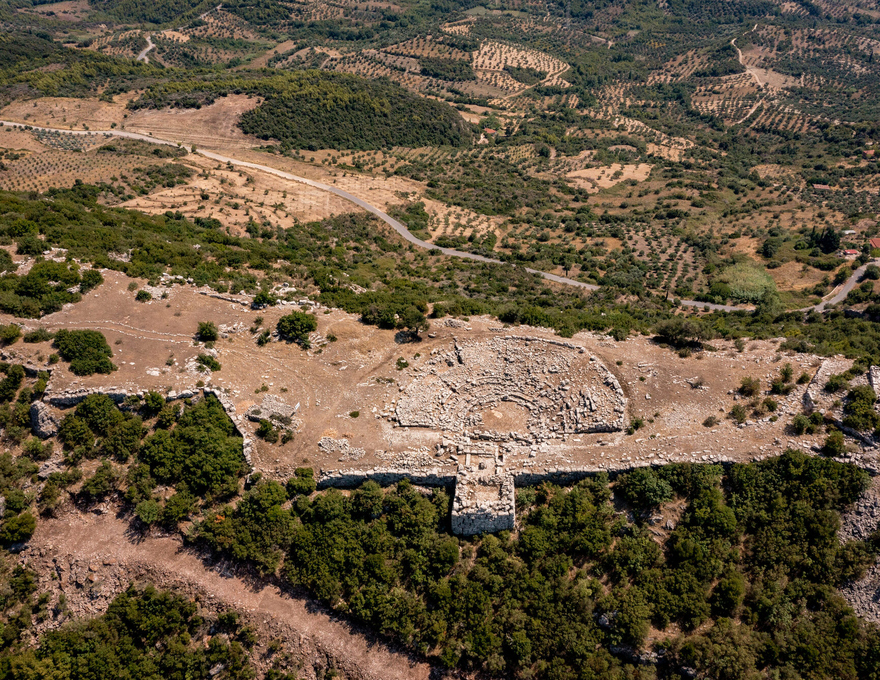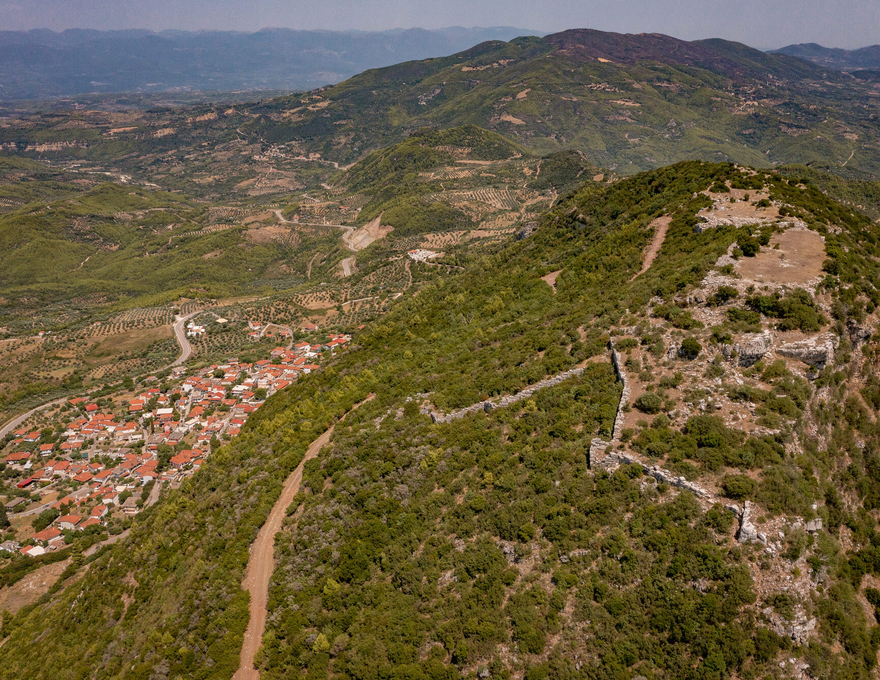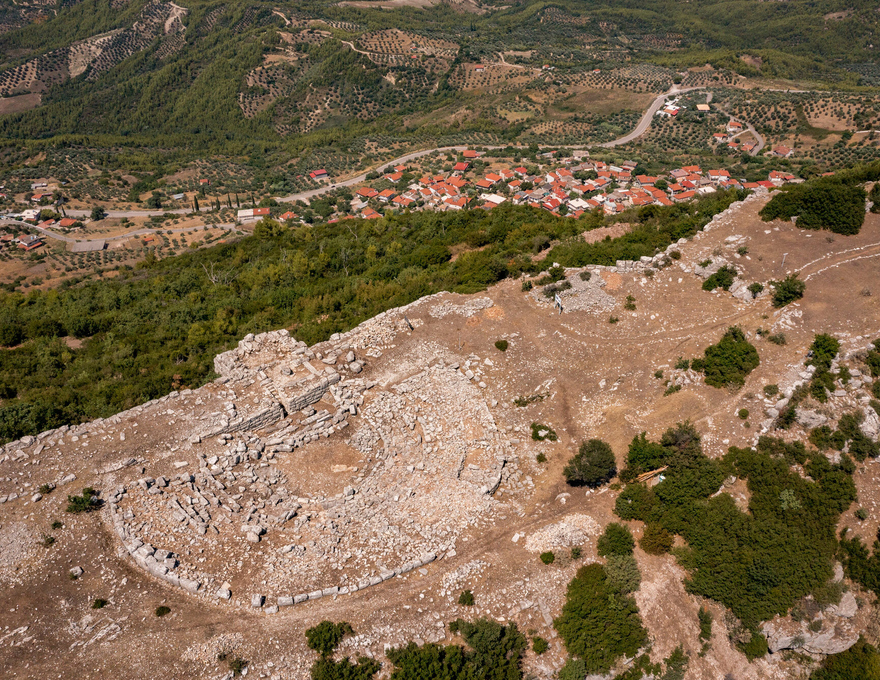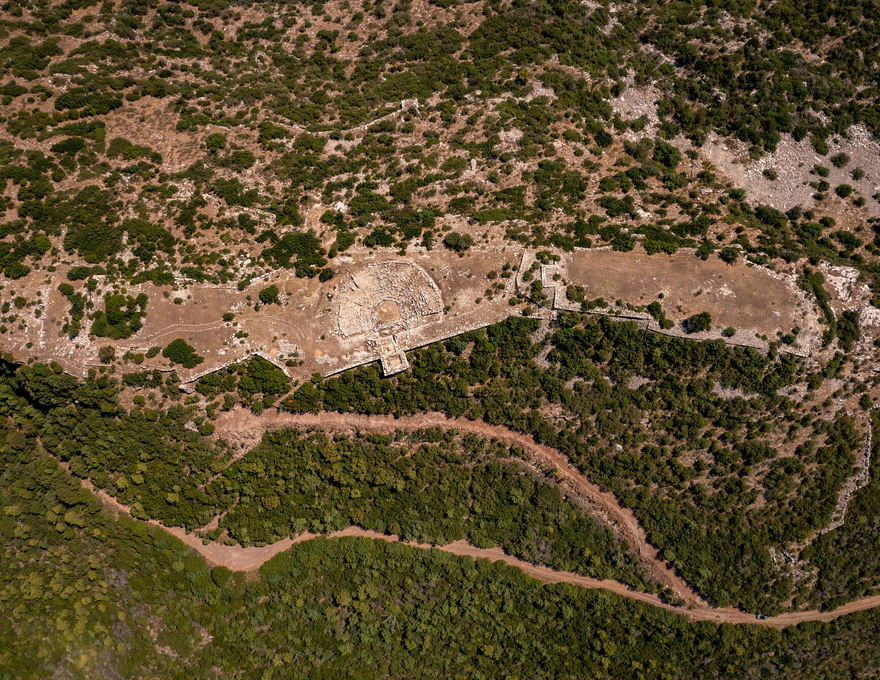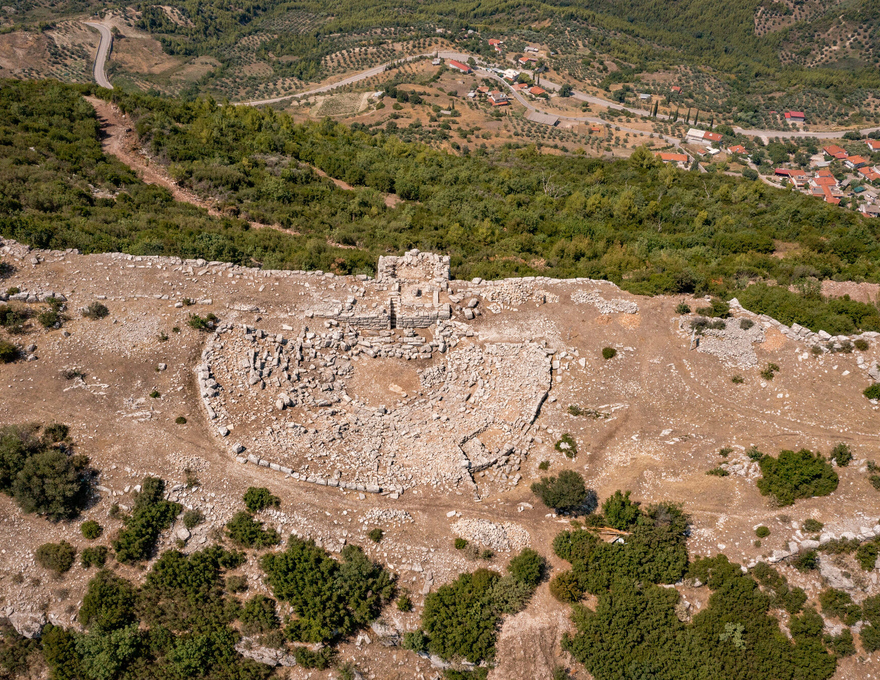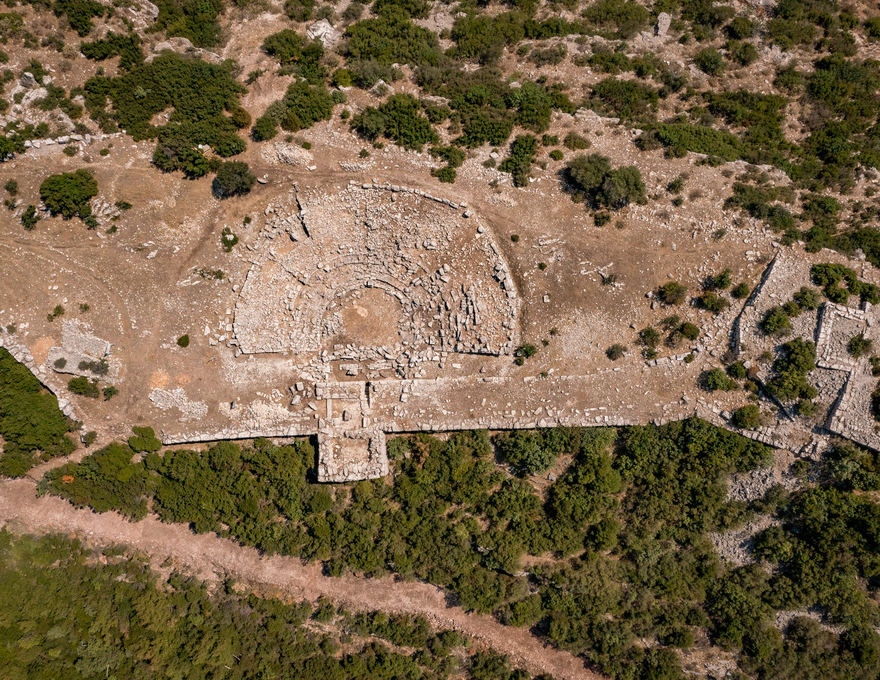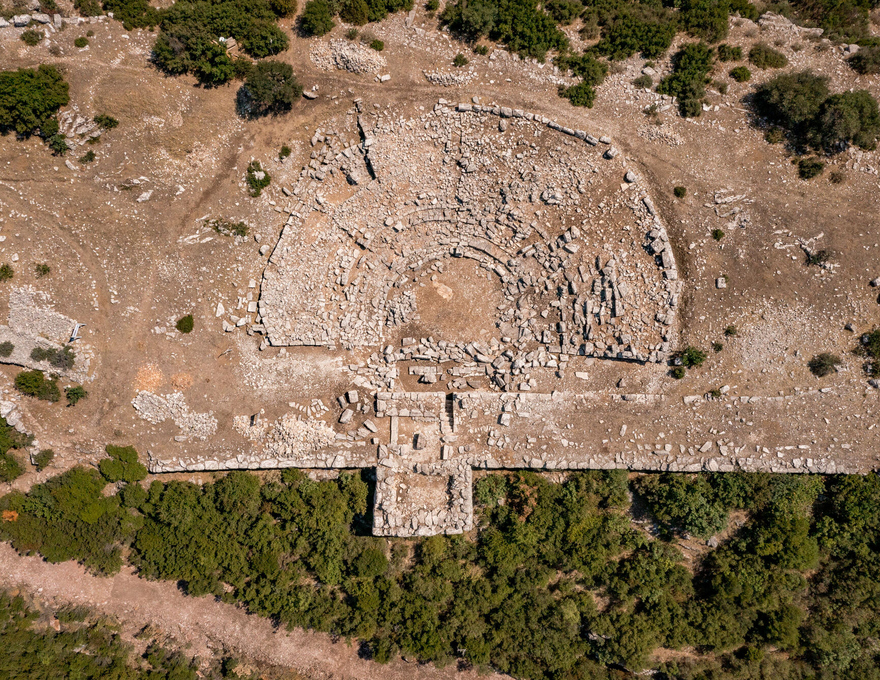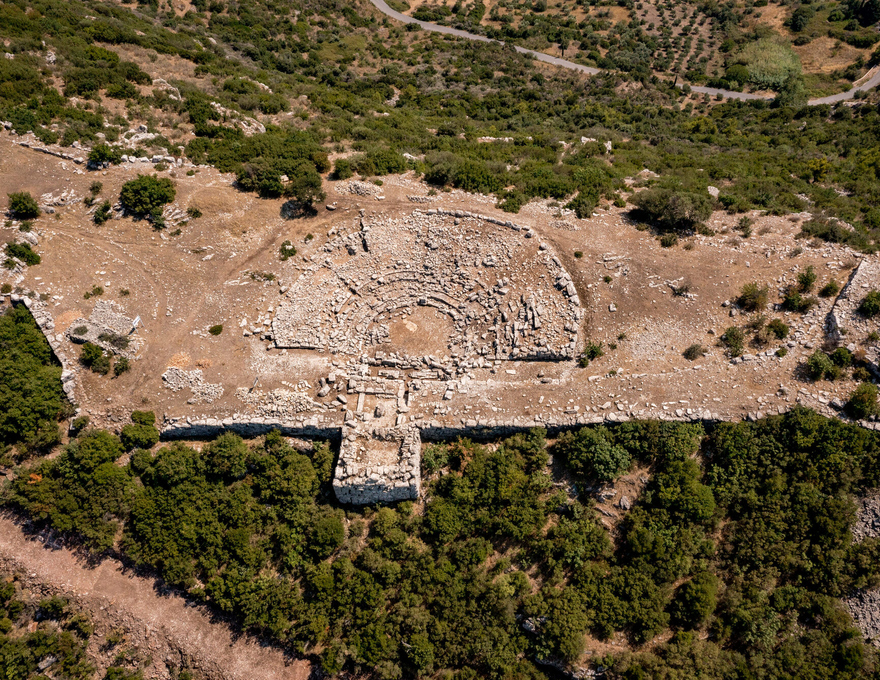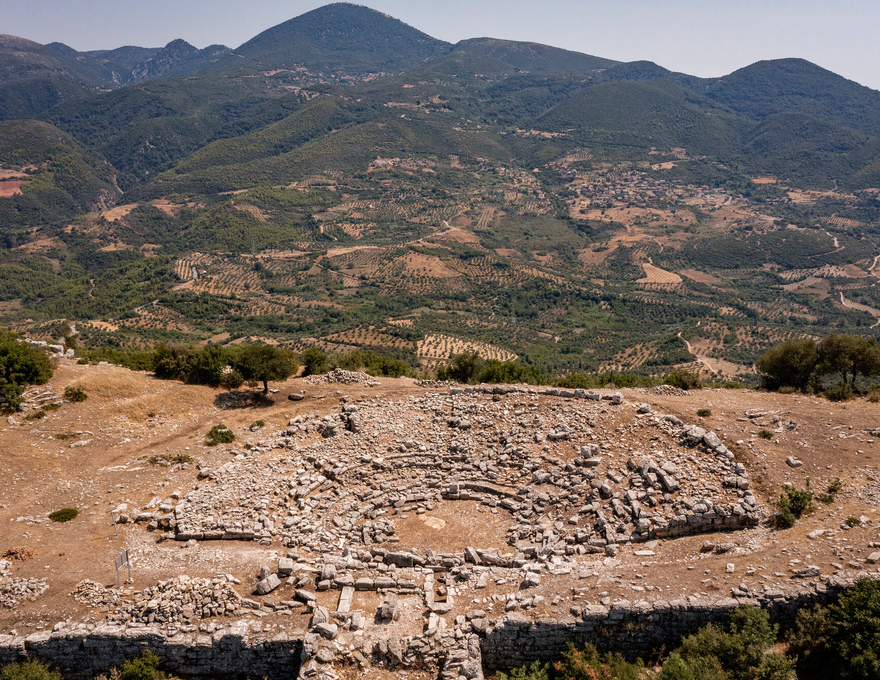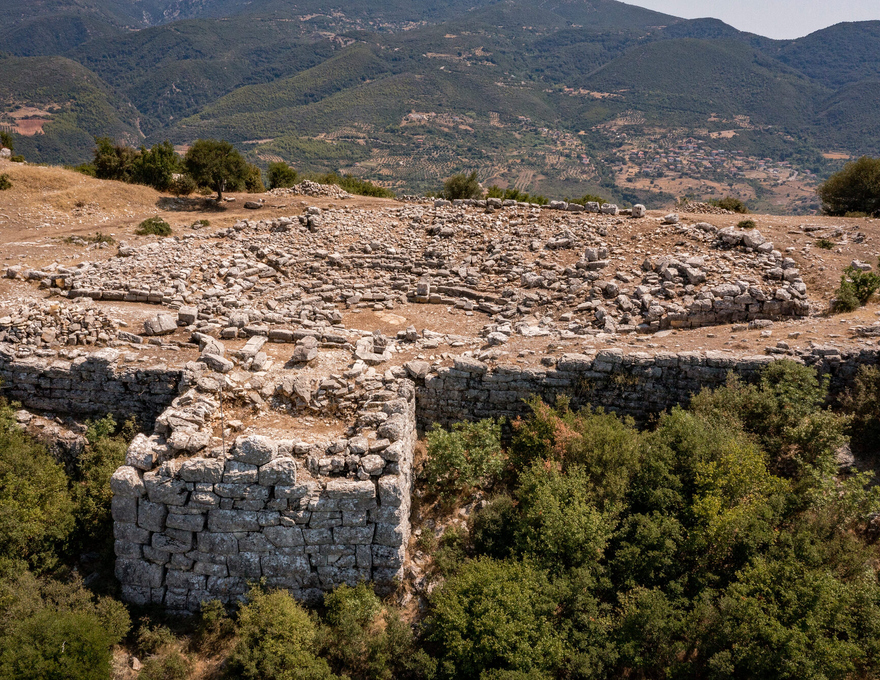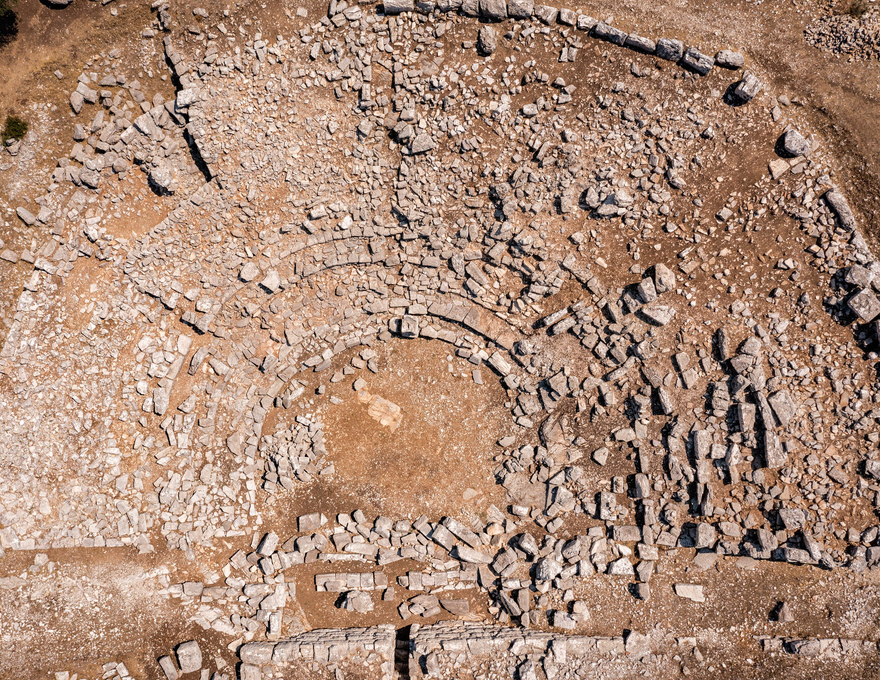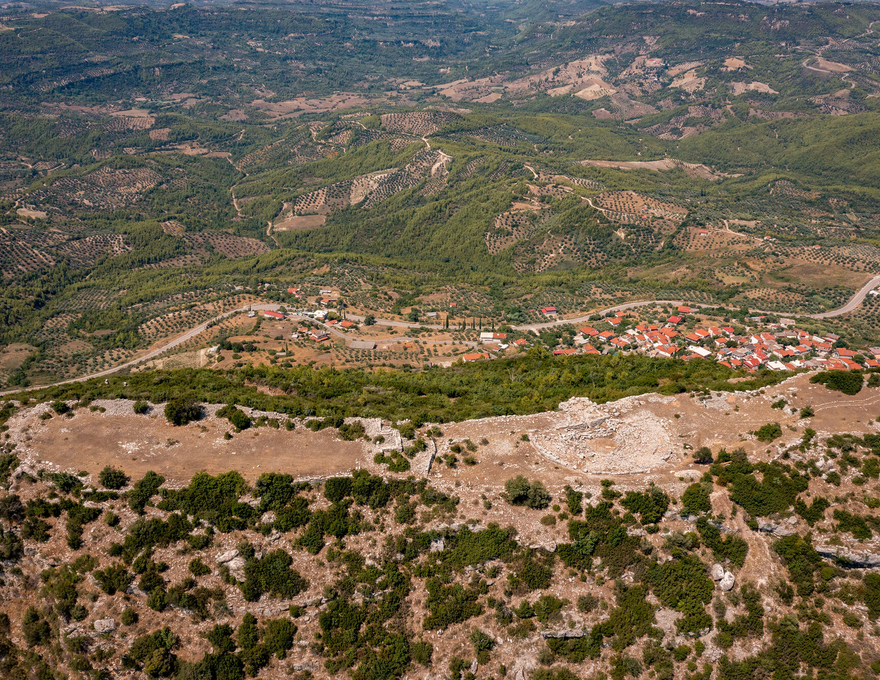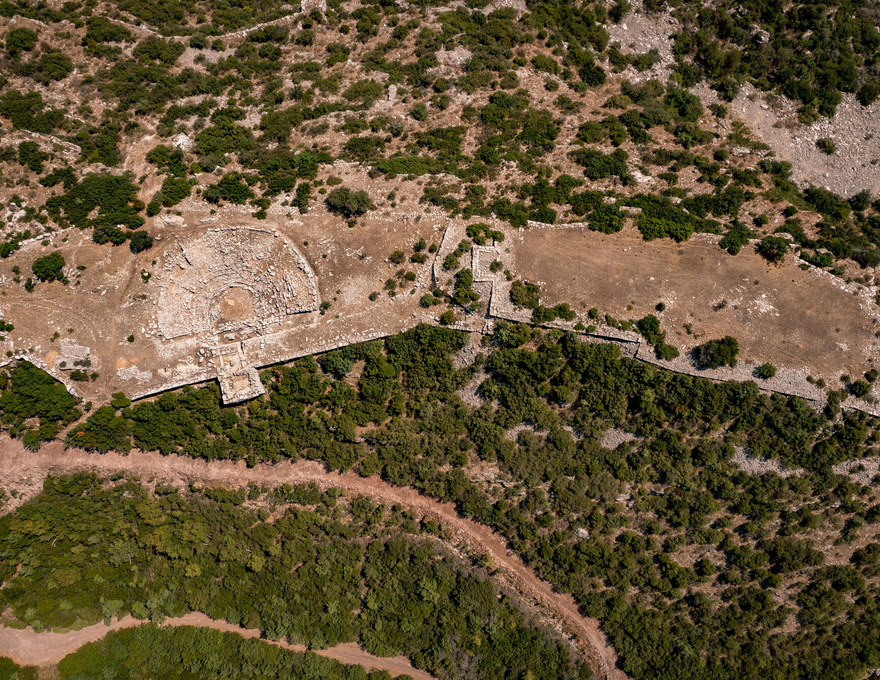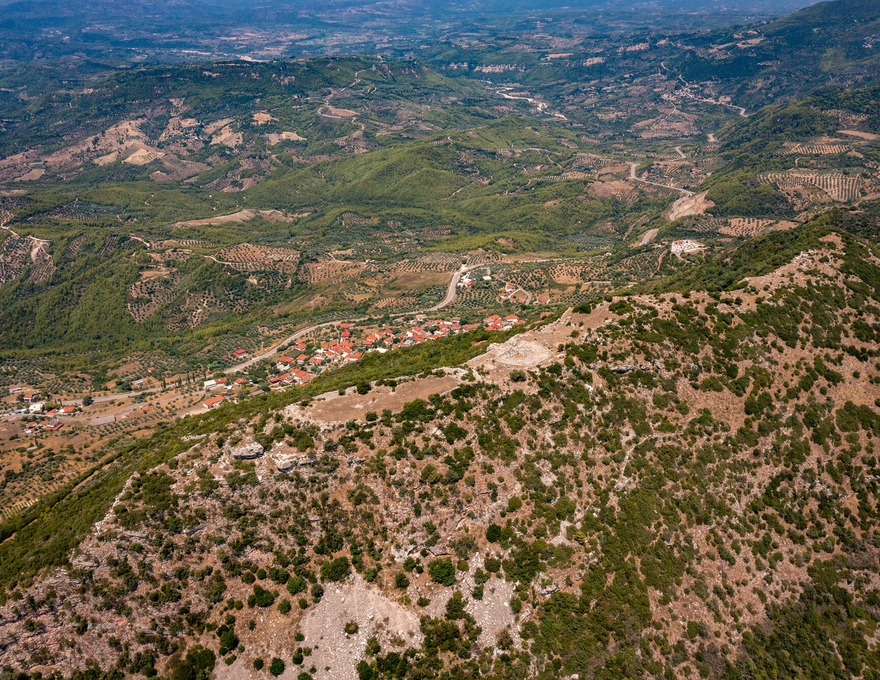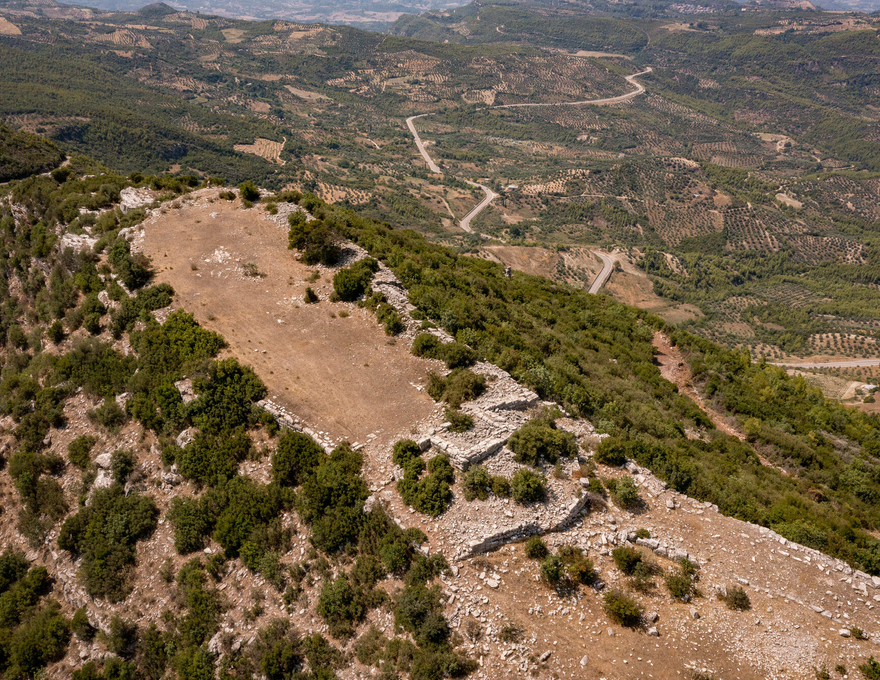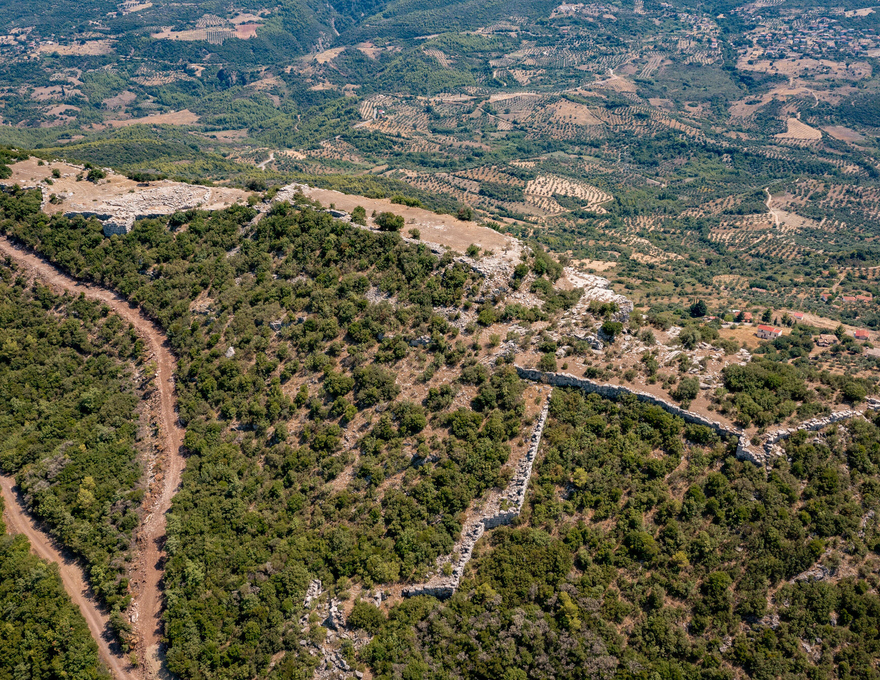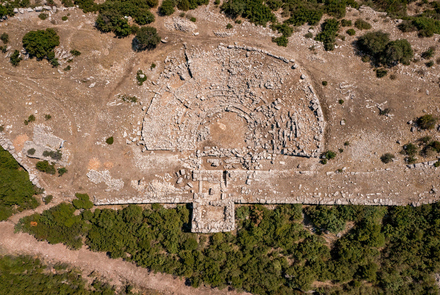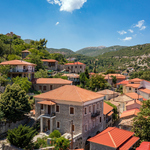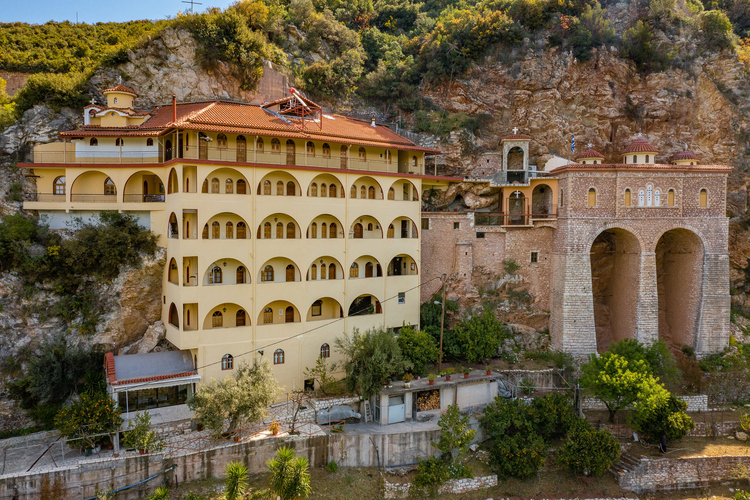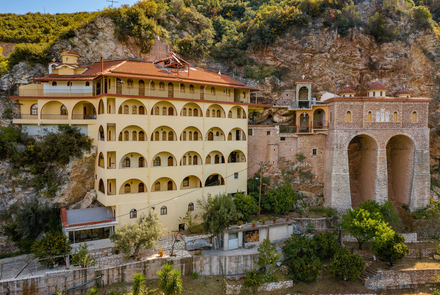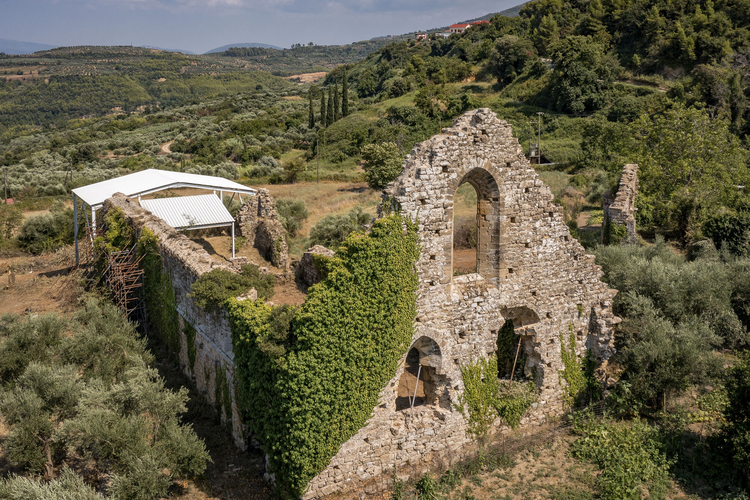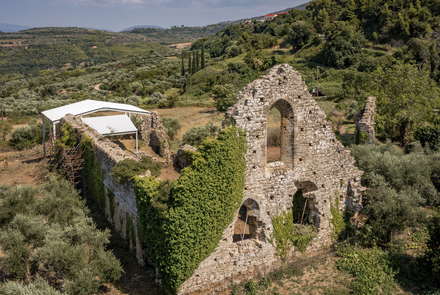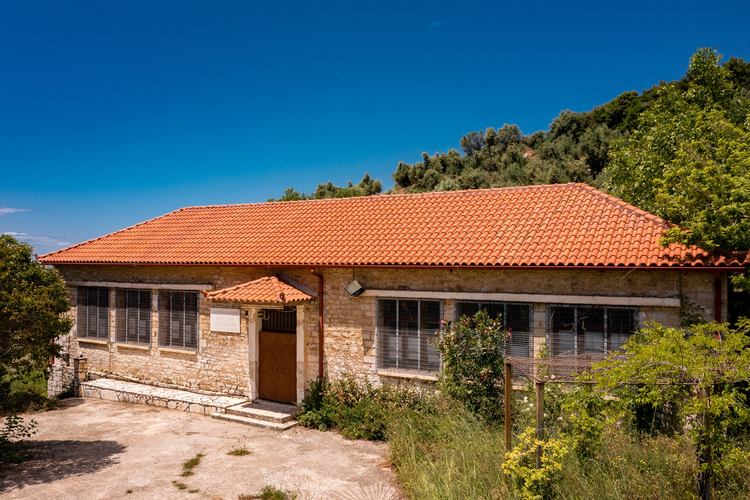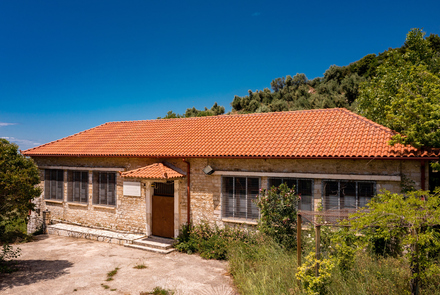Dominating over the homonymous village of the present-day Municipality of Andritsaina - Krestena and crowning with its walls the cliff on one of the highlands of the eastern ends of Mount Lapitha, on the former border of ancient Triphylia with Arcadia, the acropolis of Platiana with the well-preserved ruins, keeps its ancient name and identity a secret.
Perhaps it is the city of Typaneai or the city of Hypana of ancient Triphylia, which are mentioned by Polybius in connection with the invasion of the Macedonian king Philip II in the region during the War of the Allies (220-217 BC), as well as from other ancient sources and epigraphic testimonies. With a little more effort and walking, the visitor has the opportunity to admire the remains of an impressively fortified city, while the view from the high hill evokes feelings of euphoria and thrill.
The acropolis of Platiana is a very important archaeological site of today's Ilia, with its heyday being placed in the late Classical and Hellenistic eras. The fact that it dominated the area of mountainous Triphylia and controlled the road from Pisatis to Megalopolis and the rest of Arcadia should have been a factor in choosing that position during antiquity. From the discovery of stone artefacts during deforestation operations on the top and slopes of the hill, it is assumed that the site also had prehistoric phases of habitation.
It is classified among the acropoleis of ancient Triphylia, namely the naturally fortified positions that were reinforced with walls, because they had strategic importance and therefore were subjected to external threats. The city is surrounded by a fortified circuit wall that dates back to the late Classical and Hellenistic eras and which as a whole is preserved in a very good condition.
Among the remains of the city, the theater located in the eastern part of the acropolis stands out and is of particular importance, as it is the second surviving monument of this category in Ilia, after that of ancient Elis (Ilida). A part of the stage and the koilon (cavea) dating back to the 4th c. BC is preserved, while the ancient retaining wall of the theater is preserved in a very good condition and a throne from the seats of honour (proedriae) in its original position.
Copyediting: Ephorate of Antiquities of Ilia
- Platiana of Krestena, P.C. 27062
- efahle@culture.gr
- 2624022742 / 2624023753
- Police Department of Ilia - P.D. of Krestena, Ephorate of Antiquities of Ilia
Winter (November - April):
08:30 a.m. - 03:30 p.m.
Summer hours (May - October):
08:00 a.m.- 08:00 p.m.
Last admission (all days): 15 minutes before closing time.

